Top 10 India’s Most Dark Haunted Places
India is home to a plethora of haunted locations that have gained a Reputation for their eerie and paranormal Activities. From ancient forts to abandoned mansions ,these Places are shrouded in darkness and mystery. In this article ,We will unveil the top 10 most dark haunted places in India ,Exploring their chilling histories and spine-tingling Encounters.
Top 10 India’s Most Dark Haunted Places
Kuldhara Village, Rajasthan
Rajasthan definitely has the best assortment of abandoned ghost towns and villages. Near Jaisalmer, the Paliwal Brahmins initially lived in the hamlet of Kuldhara. According to legend, all the residents of Kuldhara and 83 other adjacent villages vanished overnight in 1825, leaving no sign of their whereabouts. According to rumours, the minister of state had fallen in love with a local girl and had threatened to tax the entire town heavily until they wed her to him. The chief of Kulhara and the surrounding region abandoned their settlements in order to save the girl’s honour, and he cursed the territory to be uninhabitable forever.
Ancient Settlement: Kuldhara Village ,located in the Jaisalmer district of Rajasthan, India, has a history that dates back centuries. It was established as an ancient settlement by the Paliwal Brahmins ,a prosperous and culturally rich community ,believed to have inhabited the region since the 13th century.
Abandonment and Legend: In the early 19th century, Kuldhara and its surrounding villages faced adverse circumstances under the rule of the Diwan (Prime Minister) of Jaisalmer, Salim Singh. According to local folklore ,the Diwan developed a desire to marry a girl from Kuldhara and threatened the villagers with heavy taxes if they didn’t comply. As a result ,the Paliwal Brahmins, in an act of collective decision-making, chose to abandon their homes and migrate to other regions to escape the Diwan’s tyranny.
Mysterious Desertion: The mass exodus from Kuldhara and its neighboring villages happened in the early 1800s, leaving behind a once-thriving community and a deserted village. The sudden and mysterious desertion of the entire village led to various legends and ghost stories associated with Kuldhara, contributing to its reputation as a haunted place.
Archaeological Importance: Over the years, Kuldhara Village gained archaeological significance due to its well-preserved ruins and the enigmatic story of its abandonment. The Archaeological Survey of India (ASI) recognized its historical value and undertook efforts to preserve the site and its structures, making it an intriguing destination for tourists and history enthusiasts alike.
Heritage and Tourism: In recent times, Kuldhara has emerged as a heritage site and a popular tourist attraction. The Rajasthan government, along with the ASI ,has taken measures to protect the village’s heritage and promote responsible tourism. Visitors can explore the deserted village ,witness its ancient architecture, and learn about the intriguing tale of its abandonment ,which continues to captivate the imagination of all who visit Kuldhara.
Bhangarh Fort, Rajasthan
The abandoned town of Bhangarh ,which is Situated in the Alwar area ,is one of the Spookiest Places conceivable and is universally regarded as one of India’s most Haunted locations. Because it is Seen to be so unsafe ,even the Archaeological Survey of India has made it illegal for anybody to visit the Bhangarh Fort after dark.
Ancient Origins: The History of Bhangarh Fort ,located in Rajasthan ,India ,dates back to the 17th century and possibly even earlier. It is believed that the fort was constructed during the reign of Raja Bhagwant Das ,a prominent ruler of the Kachwaha dynasty, who founded the city of Jaipur.
Architectural Splendor: Bhangarh Fort was designed and built in a typical Rajput architectural style, showcasing intricate stone carvings, majestic gates, and imposing bastions. The fort complex also included temples, palaces, and havelis, highlighting the grandeur of the bygone era.
The Curse: A legendary and mysterious aspect of Bhangarh Fort’s history revolves around a curse that supposedly fell upon the fort and its inhabitants. According to local folklore, a sorcerer named Singhia fell in love with Princess Ratnavati, the beautiful princess of Bhangarh. He tried to cast a spell on her using a potion but failed. In a fit of anger, he cursed the entire fort, predicting its doom and abandonment.
Bhangarh Fort, Rajasthan: Following the alleged curse, Bhangarh Fort faced a series of unfortunate events, leading to its eventual abandonment. The exact reasons behind the fort’s decline are debated, but various theories suggest that invasions, natural disasters, or the curse itself could have contributed to its downfall.
Preserved as a Historical Monument: Despite the passage of time and its state of ruins, Bhangarh Fort has retained its charm and allure. Today ,it stands as a popular tourist attraction and a protected historical monument under the Archaeological Survey of India (ASI). The fort’s intriguing history ,coupled with its architectural beauty and the aura of mystery surrounding it, continues to captivate visitors from around the world.
Dow Hill, Kurseong, West Bengal
In Kurseong, Darjeeling, the Victoria Boy’s High School and Dowhill Girl’s Boarding School are thought to be the homes of several ghosts, whose footsteps may be heard resonating through the corridors. Numerous residents and tourists have reported being followed by a headless youngster who then vanishes into the woods. Countless dead remains have been discovered in the forests around the schools.
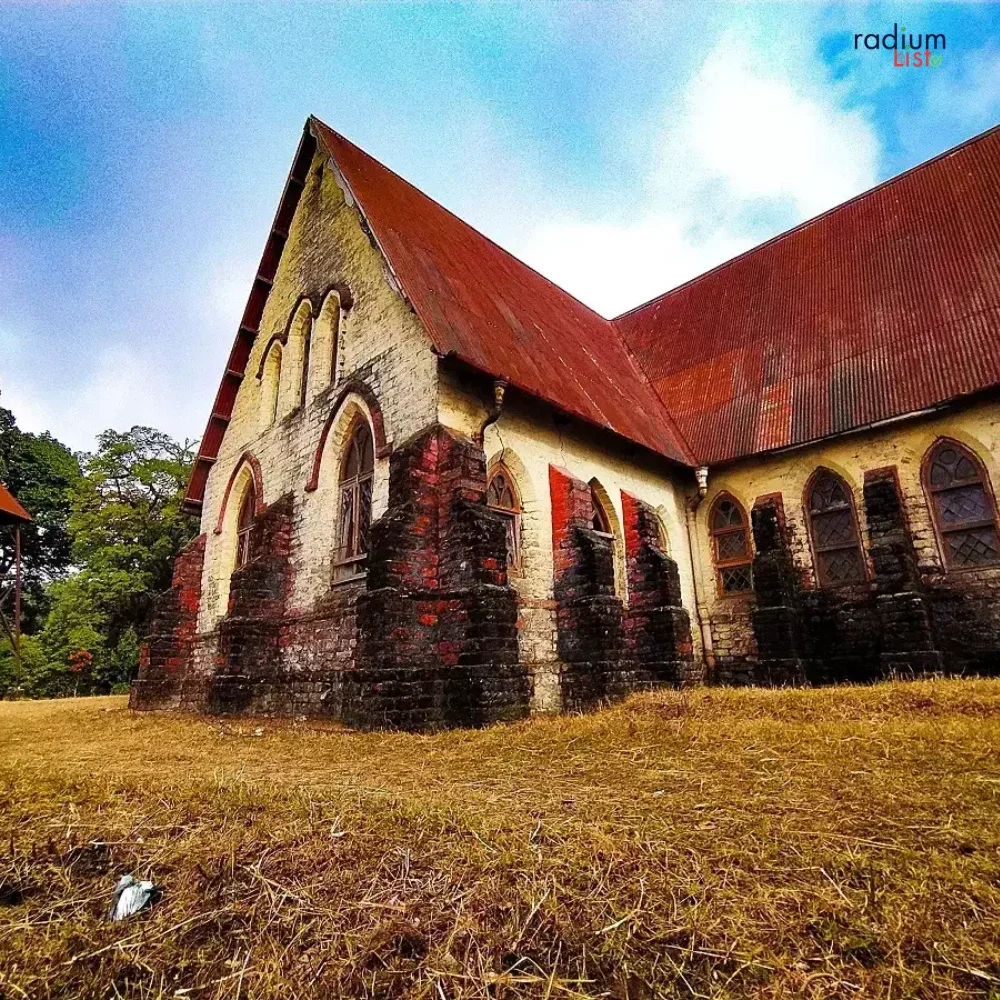
Colonial Origins: Dow Hill, located in Kurseong, West Bengal, has a colonial history dating back to the British era. During the British rule in India, the picturesque region of Kurseong, known for its pleasant climate and scenic beauty ,attracted the attention of the British officials and tea planters.
Establishment of Dow Hill School:In the late 19th century ,the British colonial authorities established a boarding school in Dow Hill to provide education for the children of British and Anglo-Indian families residing in the region. Dow Hill School, nestled amidst the lush greenery ,became an iconic educational institution in the area.
Transformation into a Hill Station: With the establishment of the Dow Hill School and the presence of other colonial-era structures, the surrounding area of Dow Hill gradually transformed into a popular hill station. The serene environment and cool weather attracted tourists and visitors seeking respite from the heat of the plains.
Dow Hill Ghost Stories: Over the years, Dow Hill gained a reputation for eerie occurrences and ghost stories. The dense forests and mist-covered landscape added to the mystique of the area. Several spooky tales, often centered around Dow Hill School and the nearby Victoria Boys’ School, contributed to the region’s haunting reputation.
Modern Tourism and Conservation Efforts: In recent times, Dow Hill has become a prominent tourist destination, attracting travelers from all around. The West Bengal government has taken steps to preserve the natural beauty of the region and promote eco-friendly tourism. Despite the ghost stories, Dow Hill continues to draw visitors who wish to experience the tranquility and charm of this enchanting hill station.
Dumas Beach, Gujarat
The dark sands of Gujarat’s Dumas Beach along the Arabian Sea coast have long been linked to a number of mysteries. Many people think that because the beach was formerly a Hindu cemetery, wandering nighttime visitors are being summoned back to the coast by restless souls. According to some tales, individuals who ignore the cries of the dead vanish forever into the waves. Definitely not for the timid, this beach.
Ancient History and Mythology: Dumas Beach, located along the Arabian Sea in Gujarat, India, has a rich historical background dating back centuries. According to local folklore, the beach area was believed to be a cremation ground for Hindus in ancient times. This association with cremation practices has led to various haunting legends and ghost stories surrounding Dumas Beach.
Colonial Era and British Influence: During the British colonial period, Dumas Beach gained popularity as a seaside retreat for British officers and other European settlers. The serene coastline and pleasant weather attracted many visitors, turning it into a favored leisure spot in the region.
Post-Independence Development: After India gained independence in 1947 ,Dumas Beach continued to attract tourists and locals alike due to its scenic beauty and recreational opportunities. The Gujarat government recognized its tourism potential and invested in the development of basic infrastructure to accommodate the growing number of visitors.
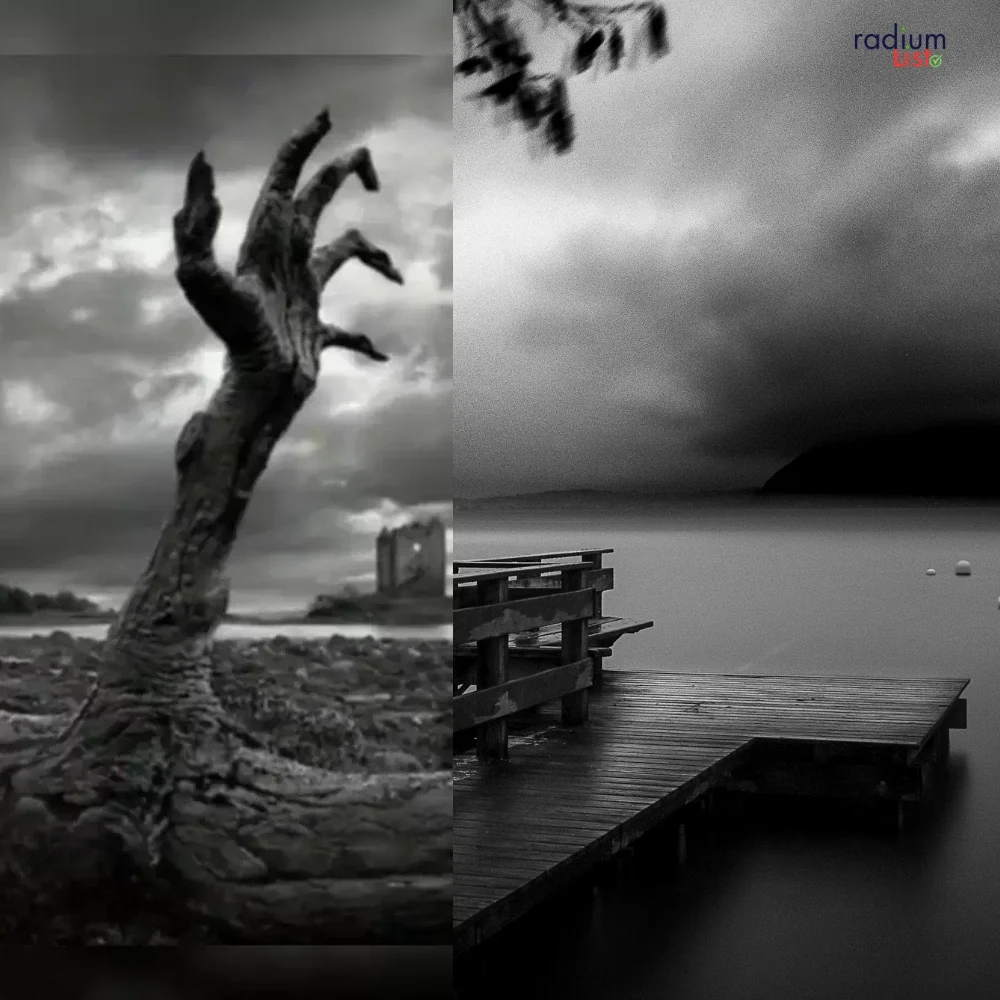
Haunting Stories and Paranormal Beliefs:Over the years, Dumas Beach has become synonymous with eerie tales and supernatural beliefs. Many locals and tourists claim to have experienced strange occurrences ,leading to its reputation as a haunted destination. These stories often revolve around apparitions and unexplained sounds attributed to the restless spirits of those who were cremated on the beach.
Modern Tourism and Conservation Efforts:Despite the haunting legends ,Dumas Beach continues to be a popular tourist destination ,attracting both thrill-seekers intrigued by its spooky reputation and nature lovers fascinated by its scenic beauty. In recent years ,there have been efforts by the local authorities to promote responsible tourism and conserve the environment of the beach ,ensuring its preservation for future generations to enjoy.
Jatinga, Assam
One of the most perplexing phenomenon in the world occurs in this small community of 2500 people: recurrent mass bird suicides. Local and migratory birds have historically dropped to the ground in huge numbers during moonless evenings in September and October, but only in a particular region. This has confounded experts who, to put it mildly, find it exceedingly troubling because there is no logical explanation for why birds would fall from the sky dead in such a sequence.

Indigenous Village: Jatinga is a small village located in the North Cachar Hills district of Assam, India. It has a long history as an indigenous village, inhabited by various tribal communities for generations, who relied on agriculture and traditional livelihoods.
Discovery of Bird Phenomenon: Jatinga gained attention in the early 20th century when a peculiar bird phenomenon was observed. In the late monsoon months between September and November, large numbers of migratory and local birds were found flying towards the village at night, often colliding with buildings and trees.
Bird Suicides Myth: The unique phenomenon, where the birds seemed to dive to their deaths, led to the rise of the “bird suicides” myth. However, scientific investigations later revealed that the birds were not intentionally committing suicide. Instead, they were disoriented by the monsoon fog and strong lights in the village, causing them to collide and fall.
Ornithological Interest: Jatinga’s bird phenomenon attracted ornithologists and researchers from across the world. They studied the migratory patterns, bird behavior, and environmental factors contributing to the strange occurrence. It became a subject of scientific curiosity and received both national and international attention.
Conservation and Tourism: Over the years, efforts have been made to conserve the birds and their habitat in Jatinga. Conservation initiatives and awareness campaigns aimed at minimizing artificial lighting during the migratory season have been undertaken to reduce bird collisions. Additionally, the unique bird-watching experience has also led to a growth in eco-tourism, bringing visitors to witness the bird phenomenon in a responsible and sustainable manner.
Agrasen ki Baoli, New Delhi
The ASI has designated this elaborately constructed old location in Delhi as an architectural treasure. However, the locals think it is haunted by ghosts and demonic beings who prowl the dark corners and pursue tourists. Visitors have expressed complaints about entering and experiencing an inexplicable fear.
Ancient Origin: Agrasen ki Baoli ,located in the heart of New Delhi ,India ,is an ancient stepwell that dates back to the medieval period. The exact historical timeline of its construction is not well-documented, but it is believed to have been built during the Mahabharata era, making it over a thousand years old.
Architectural Significance: The baoli, or stepwell, is an architectural marvel characterized by a series of steps leading down to a water reservoir. Agrasen ki Baoli features three levels of steps, intricately designed to provide easy access to the water source at the bottom. The stepwell showcases the impressive engineering skills of its time and reflects the importance of water conservation in an arid region.
Connection to Agrawal Community: The stepwell is named after Maharaja Agrasen, a legendary figure and a revered leader of the Agrawal community. According to local folklore, Maharaja Agrasen had a significant impact on the establishment and development of this stepwell, making it a revered site for the Agrawal community.

Cultural and Historical Significance: Agrasen ki Baoli has cultural and historical significance as it not only served as a water reservoir for the local population but also provided a space for social gatherings, meditation, and refuge from the scorching heat. The stepwell’s deep well and cool surroundings made it a popular spot for locals and travelers alike.
Present-Day Importance: Today, Agrasen ki Baoli stands as a protected monument under the Archaeological Survey of India (ASI). It continues to attract tourists, history enthusiasts, and architecture lovers from around the world who come to explore its intriguing design and learn about its historical roots. The site also remains a symbol of Delhi’s rich heritage and the importance of water management in India’s ancient urban centers.
Ramoji Film City
You might not be aware that one of India’s most well-known film towns was constructed on the corpses of Sultanate warriors, whose restless spirits continue to haunt the locations for films today. Lights abruptly go out, mirrors become scratched, and equipment is constantly wrecked, injuring stuntmen. Women have reported about being confined in rooms and having their clothing ripped by unseen forces.
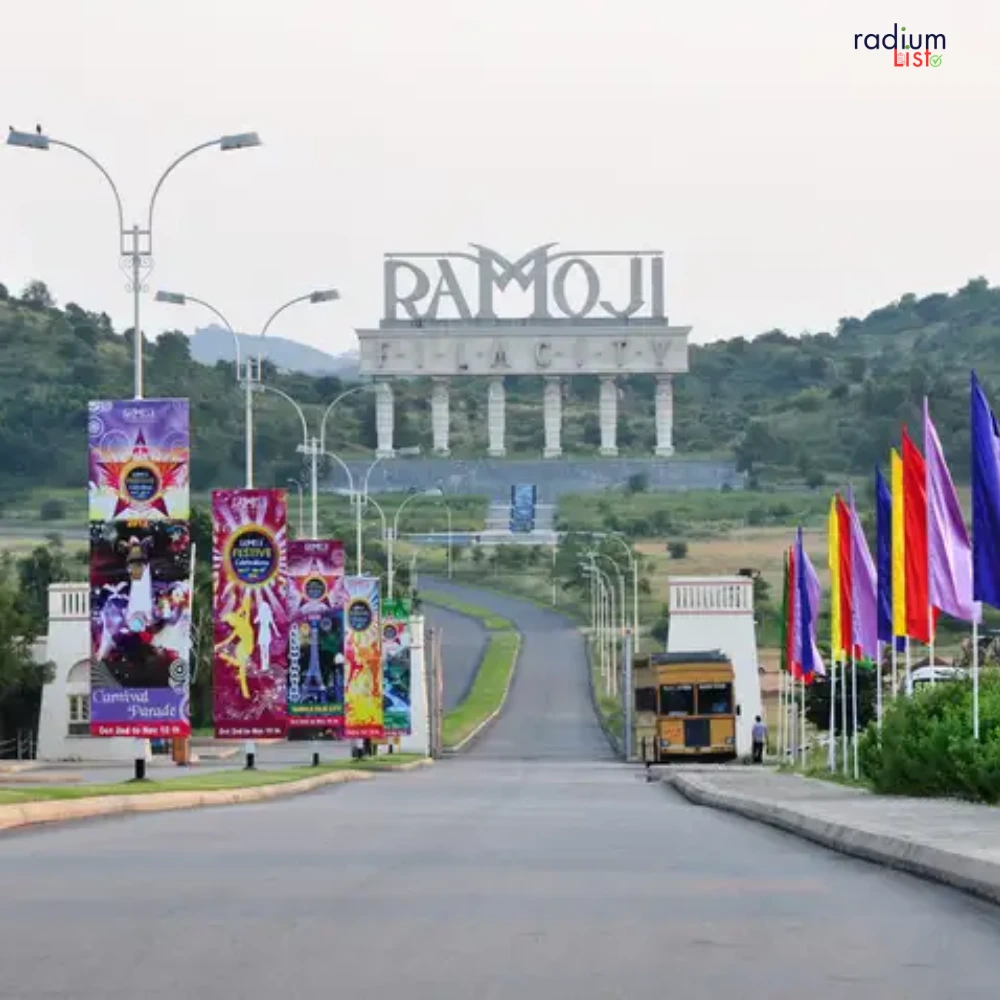
Inception and Vision: Ramoji Film City ,located in Hyderabad ,India ,was conceptualized and developed by Ramoji Rao ,an eminent Indian media entrepreneur and film producer. The idea of creating a comprehensive film studio and entertainment complex was born out of his vision to provide a world-class destination for filmmakers and tourists alike.
Construction and Inauguration: The construction of Ramoji Film City began in 1994 ,and it took almost two years to complete. On January 16, 1996, the film city was officially inaugurated by Shri N.T. Rama Rao ,the then Chief Minister of Andhra Pradesh. The sprawling complex ,spread over an extensive area of approximately 2,000 acres, soon became the largest integrated film studio complex in the world ,as recognized by Guinness World Records.
Filmmaking and Tourist Attraction: Ramoji Film City became a hub for the Indian film industry, offering state-of-the-art production facilities, multiple sound stages ,sets ,and outdoor locations. Numerous Indian films and television shows have been shot at this location ,making it a crucial center for the entertainment industry.
Diverse Attractions: Over the years, Ramoji Film City expanded its offerings beyond filmmaking and became a major tourist attraction. The complex features various thematic sets, gardens, amusement rides, live shows, and cultural performances, catering to visitors of all ages and interests. It also includes luxury hotels and a wide range of dining options to enhance the overall experience.
Accolades and Legacy: Ramoji Film City has received widespread acclaim and recognition for its contribution to the film industry and tourism. It has earned several prestigious awards ,including the National Tourism Award ,for its excellence in promoting tourism and providing an unforgettable experience to visitors. As a result ,Ramoji Film City continues to draw tourists and filmmakers from across the globe ,leaving a lasting legacy in the world of entertainment and leisure.
D’Souza Chawl, Mumbai
The residents of this Chawl in Mahim ,Mumbai ,have claimed to have seen the ghost of a Woman who prowls the Neighbourhood at night and Disappears without a trace once it is light outside. The Neighbours think she was an elderly woman who, while fetching water, fell into a well and drowned since no one heard her cries for aid.
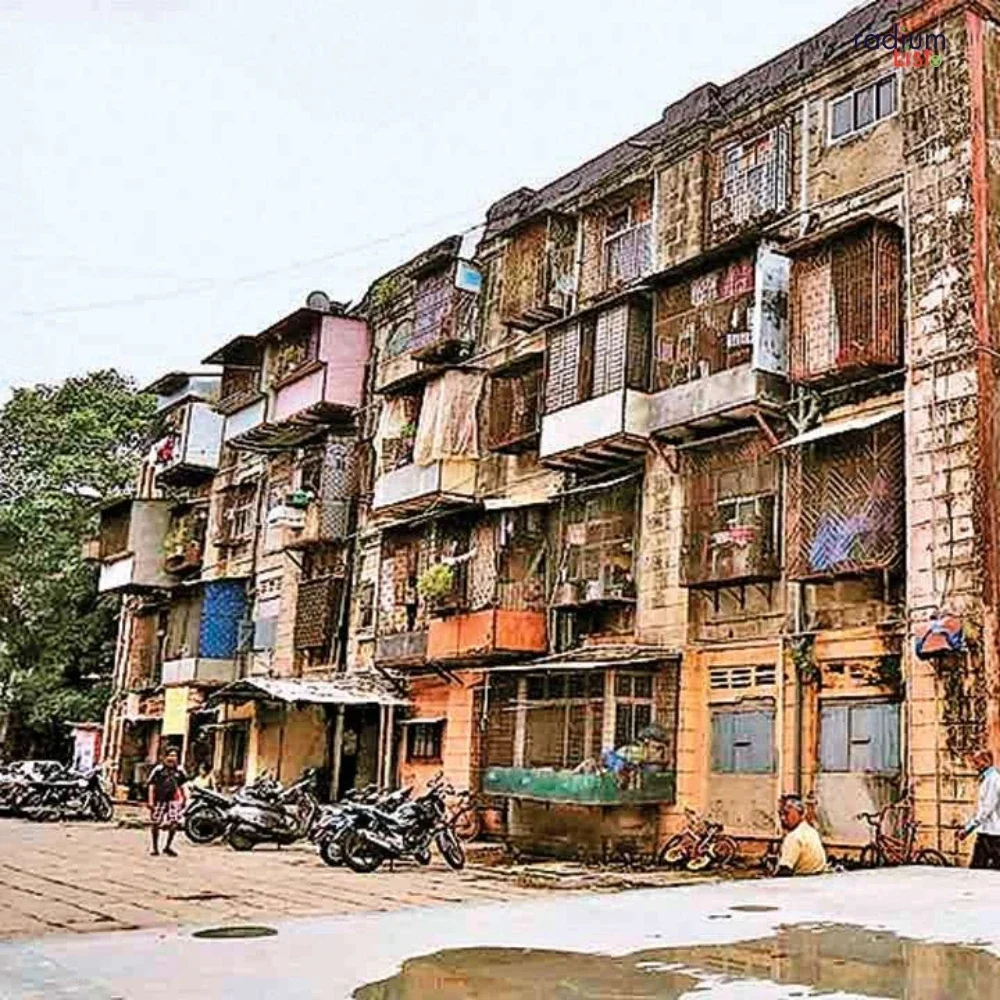
Origins and Establishment: D’Souza Chawl, located in Mumbai, India, has its origins dating back several decades. It was established as a chawl ,which is a type of multi-story tenement housing characteristic of Mumbai’s urban landscape. Chawls were Originally built to Accommodate the Growing Working-Class population in the city during the late 19th and early 20th centuries.
Growth and Development: Over the years, D’Souza Chawl witnessed growth and development as more families moved into the closely-knit community. The chawl’s architecture typically comprises small, individual rooms known as “kholis” arranged around a common courtyard or corridor. This communal living arrangement fostered a strong sense of community among the residents.
Cultural and Social Significance: Like many chawls in Mumbai ,D’Souza Chawl has been home to a diverse mix of communities and cultures. It has been a melting pot of various ethnicities and backgrounds, contributing to the vibrant social fabric of the area. Residents have often celebrated festivals and cultural events together ,further strengthening the sense of unity and camaraderie.
Challenges and Transformation: As Mumbai underwent rapid urbanization ,many chawls faced challenges related to aging infrastructure, overcrowding, and inadequate amenities. D’Souza Chawl also experienced these issues. However, in recent times, there have been efforts to revitalize and upgrade such chawl communities ,with initiatives to improve living conditions and provide better facilities to the residents.
Heritage and Identity: Despite the urban changes and challenges, D’Souza Chawl retains its historical and cultural significance. It serves as a reminder of Mumbai’s socio-economic past and the evolution of its housing landscape. The chawl’s enduring presence contributes to the city’s heritage and identity, as it stands as a living testament to the resilience and adaptability of its inhabitants throughout the years.
Bombay High Court
The attorneys at the Bombay High Court are of the opinion that one of the Courtrooms is haunted by a spiteful, tortured ghost who Prevents the accused from entering the chamber during every Murder trial. According to reports ,this has reportedly been happening for about three Decades and is best recognised as historical sites in Mumbai.
Establishment: The Bombay High Court ,one of the oldest High Courts in India, was established on August 14, 1862. It was created under the High Courts Act ,1861 ,which aimed to establish High Courts in major cities of British India for the administration of justice.
Original Jurisdiction: Initially ,the Bombay High Court had jurisdiction over the territories of the Bombay Presidency, which covered a vast geographical area ,including parts of present-day Maharashtra ,Gujarat ,and Goa. The court held both original and appellate jurisdiction over various civil and criminal matters.
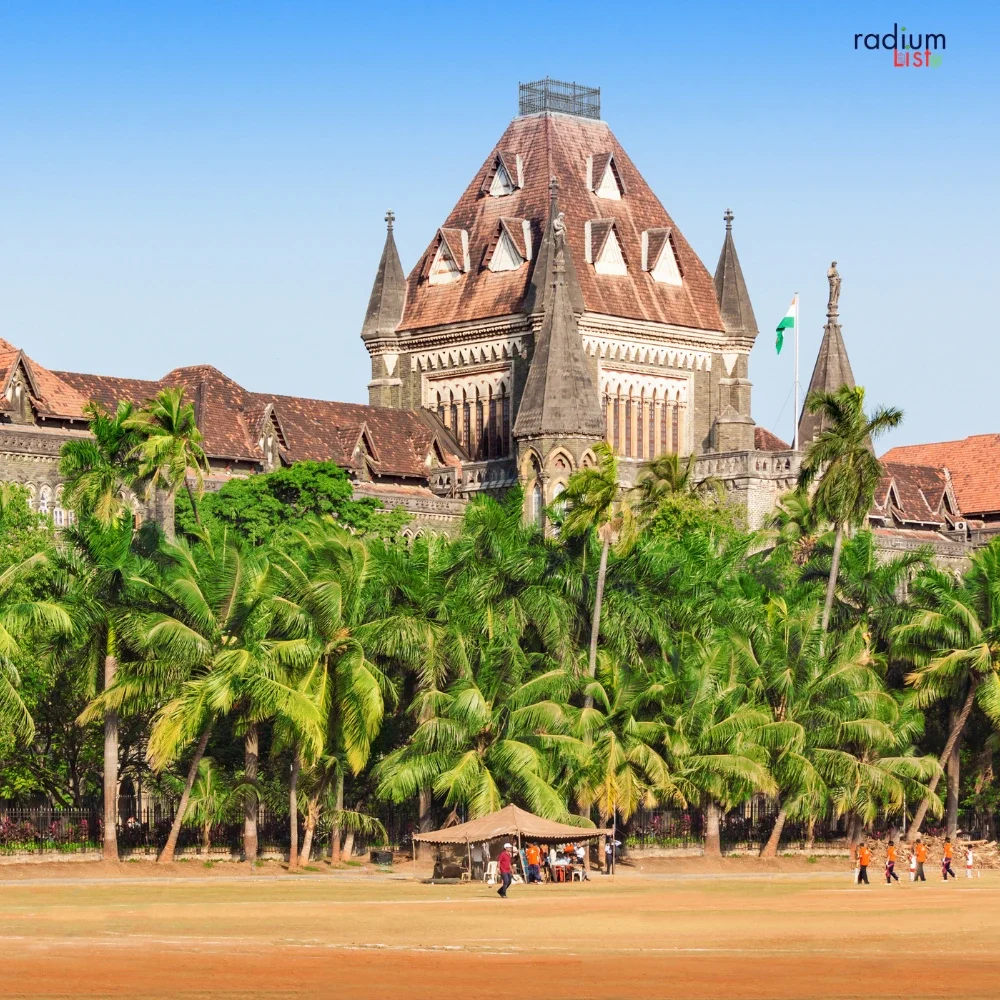
Shift to Mumbai: In 1862 ,the court’s principal seat was located in the city of Bombay (now Mumbai). Over the years ,as the city of Mumbai grew in prominence ,the High Court became a crucial institution for resolving legal disputes and upholding the rule of law in the region.
Post-Independence Reorganization: After India gained independence in 1947 ,there were significant changes in the territorial jurisdiction of the Bombay High Court. The State Reorganization Act of 1956 led to the formation of linguistic states, resulting in the reorganization of the court’s jurisdiction to cater to the new states of Maharashtra and Gujarat.
Benches and Subordinate Courts: To address the increasing caseload and accessibility issues, the Bombay High Court established its benches in Nagpur and Aurangabad, in addition to the principal bench in Mumbai. These benches help in the efficient administration of justice by serving different regions of Maharashtra. Additionally, the court has subordinate courts under its jurisdiction, which play a vital role in delivering justice at the district level.
